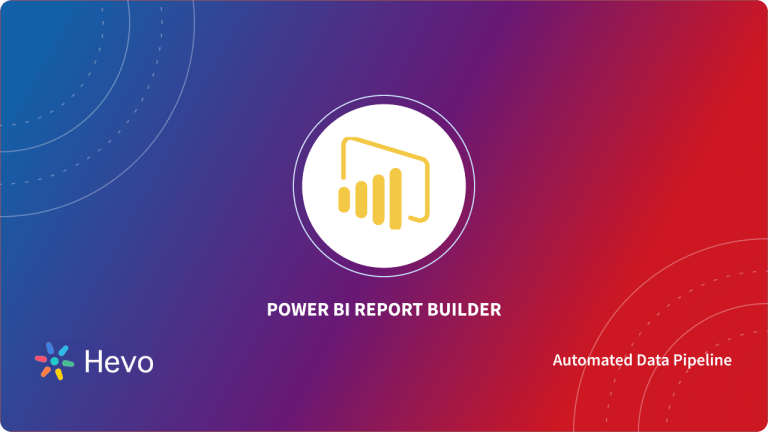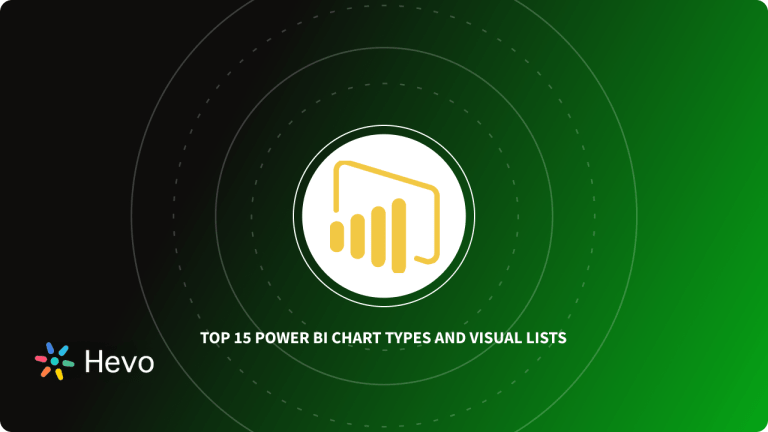Because Power BI might report and frequently display inaccurate numbers that may or may not work because of missing values, the Date Table becomes vital since you’ll need them to reference dates within your model.
So, using a date table can be beneficial if you require precise date information for your reports. It’s also critical to understand the fundamental strategies for working with the Power BI Date table so you can get things up and running as quickly as feasible.
This tutorial article will review several valuable hints that will assist you while creating and using Power BI Date Table. In addition, we have divided this article into two sections to understand better the Power BI Date Table and how it’s used. Let’s begin.
Table of Contents
What is Power BI?
Microsoft’s Power BI is a technology-driven business intelligence solution for analyzing and displaying raw data to offer actionable insights. It combines business analytics, data visualization, and best practices to assist organizations in making data-driven decisions.
Power BI offers a variety of applications, connectors, and services, including a desktop version, a SaaS-based Power BI service, and mobile Power BI apps for several platforms. Business users utilize this set of services to consume data and create BI reports.
The Power BI desktop program is used to create reports, Power BI Services (Software as a Service – SaaS) is used to publish them, and the Power BI mobile app is used to view them.
Hevo helps you migrate your data from multiple sources to a single destination, creating a single source of truth. Easily make your data analysis ready for Power BI.
- Seamless Integration: Consolidate data from multiple sources into one destination.
- Single Source of Truth: Ensure accurate and consistent data for your Power BI analysis.
- Analysis-Ready Data: Transform and prepare your data for immediate use in Power BI.
Experience hassle-free data migration with Hevo. Explore Hevo’s capabilities with a free personalized demo and see how you can benefit.
Get Started with Hevo for FreeKey Features of Power BI
- Detailed dashboards and reports: PowerBI can create highly informative reports and provides multiple visualization options that can be applied to enterprise data and extract maximum insights. Some of the most used visualization options offered by PowerBI are Bar Charts, Column Charts, Line Plots, Area Plots, Pie Charts, Scatter Plots, Treemaps, Funnel Analysis Charts, etc.
- Detailed Navigation Panel: The navigation panel of PowerBI is very detailed and gives loads of information. It enables you to view information like apps, pipelines, workflows, dashboards, and reports for both the deployed ones and the ones being planned. It helps collaborate your dashboards and reports with fellow collaborators and team members. It is dynamic and enables more accessible access to the reports that are created for MyWorkspace (personal use) and collaboration. This also allows for saving dashboards and reports belonging to separate teams individually but in the same workspace.
- Multiple Functions for analysis: PowerBI has the provision for functions known as DAX functions which are inbuilt functions that are efficient in analyzing the organizational data. These functions are predefined and need arguments to be passed. They are present in the function library of PowerBI and are updated on a regular basis.
- Multiple Dataset Visualizations: PowerBI is software that is flexible and highly scalable. It enables the use of data from singular and multiple sources, the data is accepted from both cloud solutions and on-premise offerings, and analysis of both structured and unstructured data is possible. Many primary sources supported by PowerBI are python, oracle, excel, and many more.
- Creative Dashboards: There are many pre-built themes for the dashboards that can be customized and created based on the data and requirements. Also, there are options to combine multiple visualizations and share them with others.
Advantages of Power BI
Some common advantages of using Power BI are as follows:
- Power BI is reasonably easy to learn and requires no training as a self-service product.
- Files are easy to share within the team structure. A cloud-based environment ensures visualization is refreshed for all whenever one user updates datasets.
- A robust navigation algorithm empowers Power BI users to find content quickly.
- Power BI can leverage the offerings of Azure Machine Learning and can create new machine learning models, too.
Importance of the Date Table in Power BI
- Time Intelligence: The Date Table allows you to perform time-based calculations such as Year-to-Date (YTD), Month-to-Date (MTD), Quarter-to-Date (QTD), moving averages, growth percentages, etc. Power BI requires a Date Table to handle such functions efficiently.
- Filtering and Slicing Data: It enables you to filter and slice data based on time attributes like Year, Quarter, Month, Week, Day, etc. This is crucial for creating reports and dashboards that show data trends over time.
- Relationships: In Power BI, you can create relationships between your data tables and the Date Table. This helps in combining data from different tables and performing time-based aggregation. Without a Date Table, setting up these relationships would be challenging.
- Custom Time Periods: You can customize a Date Table to include fiscal years, holidays, or other non-standard periods specific to your business or industry. This customization ensures your time-based calculations align with your company’s specific needs.
How to Set & Use Power BI Date Table?
It’s quite acceptable for many data analysts to develop their own Date Tables. In Power BI Desktop, you may define which table your model should use as its date table, and then utilize that table’s date data to build date-related visuals, tables, quick measures, and so on. You control the date hierarchies built in your model when you define your own date table, and you may utilize them in quick measures and other operations that require your model’s date table.
Setting Your Own Power BI Date Table
To create a Power BI Date table, right-click the table you wish to use as a date table in the Fields pane, then pick Mark as date table > Mark as date table from the menu that displays, as shown in the image below.
As shown in the image below, you can select the table and then select Mark as Date Table in the section under the section “Table tools.”
It’s important to know, that PowerBI conducts the following validations when you specify your own date table to ensure that the data:
- Consists unique values
- Contains zero null values
- From start to end contains contiguous date values
- Has the same timestamp across values, if it is a Date/Time data type.


Now, two possible scenarios exist for which either of these two approaches can help:
- When you employ a canonical, or basic date table and hierarchy, the first scenario occurs. This is a table in your data that matches the date table validation criteria previously specified.
- The second instance is when you want to use a table from Analysis Services as your date table, such as one with a dim date field.
You can choose which column in the date table is the date column once you’ve specified a date table. By choosing the table in the Fields pane, right-clicking it, and selecting Mark as date table > Date table settings, you may pick which column to use. The following window appears, where you can choose from a drop-down box the column to use as the date table.
When you specify your own date table, Power BI Desktop does not automatically establish the hierarchies that it would otherwise build into your model for you. If you subsequently deselect your date table (and no longer have a manually specified date table), Power BI Desktop recreates the built-in date tables for the date columns in the table for you.
It’s also worth noting that when you mark a table as a date table, Power BI Desktop removes the built-in (automatically formed) date table, and any visuals or DAX expressions you made before based on those built-in tables will no longer operate.
Conclusion
In this tutorial article, we covered all about creating and using Power BI Date Table to conduct necessary data modeling operations. And, if you want to learn more about Power BI Date Table, either of these two documents can help:
Hevo Data, a Fully-managed Data Pipeline platform, can help you automate, simplify & enrich your data replication process in a few clicks. With Hevo’s wide variety of connectors and blazing-fast Data Pipelines, you can extract & load data from 150+ Data Sources straight into your Data Warehouse or any Databases. To further streamline and prepare your data for analysis, you can process and enrich raw granular data using Hevo’s robust & built-in Transformation Layer without writing a single line of code!
VISIT OUR WEBSITE TO EXPLORE HEVOWant to take Hevo for a spin?
SIGN UP and experience the feature-rich Hevo suite first hand. You can also have a look at the unbeatable pricing that will help you choose the right plan for your business needs.
Do you have any doubts? Feel free to ask or share your experience of creating a Power BI Date Table in the comments section below!





